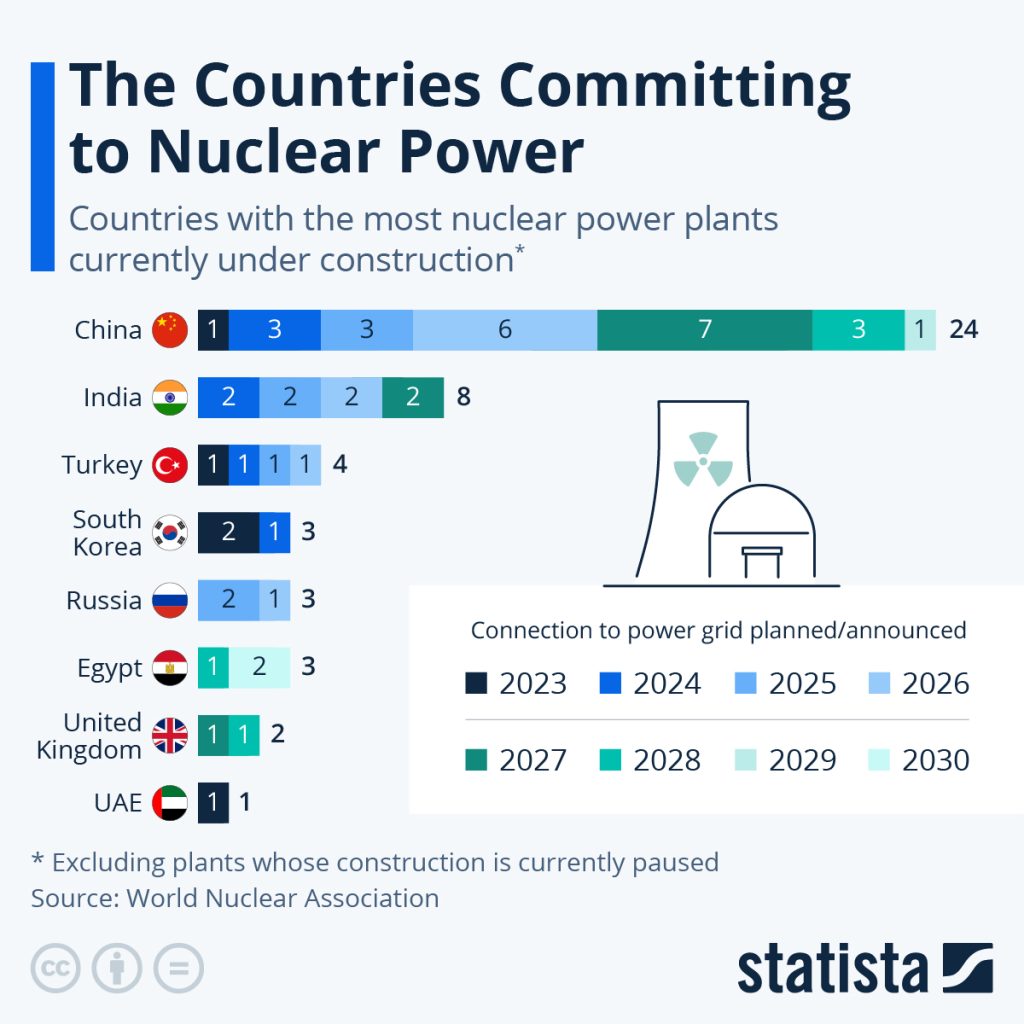Analysis: Trump's Push For Faster Nuclear Power Plant Builds

Table of Contents
Regulatory Hurdles and Streamlining Efforts
The current regulatory process for building nuclear power plants in the US is notoriously intricate and time-consuming. It involves multiple federal agencies, extensive environmental reviews, and rigorous safety assessments, leading to significant delays and increased costs. Trump's administration proposed several changes to streamline this process, aiming to reduce bureaucratic hurdles and expedite approvals.
This involved targeting specific regulations for reform, potentially impacting the depth and scope of environmental reviews. The acceleration of the permitting and approval process, while potentially reducing construction time, raised concerns about the impact on comprehensive safety protocols.
- Specific regulations targeted for reform: Streamlining the Nuclear Regulatory Commission (NRC) licensing process, reducing the length of environmental impact statements, and accelerating the approval of site preparation activities.
- Potential impacts on environmental reviews: Concerns arose that faster reviews might compromise the thoroughness of environmental assessments, potentially overlooking critical ecological considerations.
- Analysis of the speed-up's effect on safety protocols: Critics argued that rushing the process could compromise safety standards, potentially increasing the risk of accidents. A careful balance needed to be struck between speed and safety. The administration countered that improved technology and stricter oversight could mitigate these risks. The key issue was finding this balance, a challenge inherent in "faster builds" of nuclear power plants. This remains a subject of ongoing debate within the "nuclear power plant regulations" field.
Economic Incentives and Financial Support
Nuclear power plant construction requires substantial upfront capital investment. Trump's plan aimed to incentivize private sector participation through various economic incentives and financial support mechanisms. This included government subsidies, loan guarantees, and tax breaks designed to make nuclear power projects more financially attractive.
- Types of financial incentives offered: The administration considered offering direct subsidies, loan guarantees reducing the financial risk for investors, and tax credits to offset construction costs.
- Potential impact on private investment: The incentives were intended to stimulate private investment in nuclear power, reducing the reliance on government funding. However, the overall economic feasibility of faster builds remained a point of contention.
- Assessment of the economic feasibility of faster builds: While proponents argued that faster builds would ultimately reduce overall costs, critics pointed to potential cost overruns and the risk of stranded assets if the projects didn't meet their projected timelines or economic viability. The long-term financial viability of these projects remained a critical factor in evaluating the success of Trump’s policy. Analyzing the "nuclear power plant financing" landscape is crucial for understanding the potential long-term impacts of these economic incentives.
Safety Concerns and Public Perception
Public perception of nuclear power plant safety has been significantly shaped by past accidents, such as Chernobyl and Fukushima. Concerns about the potential for accidents, radioactive waste disposal, and long-term environmental impacts have led to widespread public skepticism. Accelerating the construction process raised further safety concerns, prompting questions about whether sufficient time would be allocated for thorough safety checks and risk assessments.
- Examples of past nuclear accidents and their impact: These accidents highlighted the potential catastrophic consequences of nuclear power plant failures, and fueled public anxieties about the safety of the technology.
- Analysis of the potential trade-off between speed and safety: The central challenge was balancing the economic benefits of faster construction with the imperative of maintaining rigorous safety standards. This trade-off remains a subject of intense debate within "nuclear power safety" discussions.
- Public opinion polling data regarding nuclear power: Numerous polls consistently demonstrate fluctuating public support for nuclear power. Understanding and addressing public concerns is crucial for the successful implementation of any nuclear power expansion plan. The administration's approach to "faster builds" directly impacted public perception and demanded transparent communication strategies.
The Role of Technology and Innovation
Advancements in nuclear reactor technology offer the potential for faster and more efficient construction. Modular reactor designs, in particular, promise to significantly reduce construction time and cost by manufacturing reactor components off-site and assembling them on-site like Lego blocks.
- Specific examples of innovative reactor designs: Small modular reactors (SMRs) and advanced passive reactors are examples of innovative designs that may enable faster construction and improved safety.
- Benefits and limitations of modular construction: Modular construction can reduce construction time and costs, but it also presents challenges in terms of logistics, standardization, and regulatory approvals.
- Assessment of the role of technological advancements in Trump's plan: The administration's emphasis on "faster builds" acknowledged the role of innovation and technological advancement in achieving this goal. However, the widespread adoption of advanced reactor technologies faced hurdles related to regulatory frameworks and market acceptance. The integration of "advanced reactor technology" and "nuclear innovation" into Trump's plan represented a vital element of his approach to expanding nuclear energy production.
Conclusion: Evaluating Trump's Push for Faster Nuclear Power Plant Builds
Trump's push for faster nuclear power plant builds presented a complex challenge, balancing the potential benefits of increased energy independence and job creation with concerns about safety, cost, and public perception. Streamlining regulations and providing economic incentives aimed to expedite construction, while technological advancements offered the promise of more efficient and safer reactors. However, concerns remained about the potential trade-off between speed and safety, and the long-term economic viability of such projects.
Understanding the complexities of Trump's push for faster nuclear power plant builds requires continued investigation and informed public debate. Let’s stay informed on the latest developments in nuclear power plant construction.

Featured Posts
-
 The Impact Of Enhanced Border Security A Decrease In Arrests And An Increase In Refusals Of Entry
May 11, 2025
The Impact Of Enhanced Border Security A Decrease In Arrests And An Increase In Refusals Of Entry
May 11, 2025 -
 A Look At The High Life Impressive Homes Showcased On Mtv Cribs
May 11, 2025
A Look At The High Life Impressive Homes Showcased On Mtv Cribs
May 11, 2025 -
 Speedway Classic Commissioner Manfreds Insights And Announcements
May 11, 2025
Speedway Classic Commissioner Manfreds Insights And Announcements
May 11, 2025 -
 Learn About Debbie Elliott Biography Career And More
May 11, 2025
Learn About Debbie Elliott Biography Career And More
May 11, 2025 -
 Revealed Shevchenkos Dragon Themed Outfit For Upcoming Ufc Fight
May 11, 2025
Revealed Shevchenkos Dragon Themed Outfit For Upcoming Ufc Fight
May 11, 2025
